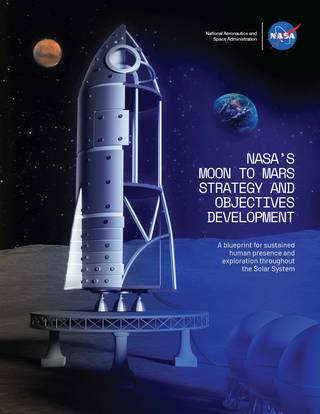Editor’s note: For more on the outcomes from NASA’s Architecture Concept Review, visit: https://www.nasa.gov/moontomarsarchitecture
As NASA evolves its blueprint for shaping exploration throughout the solar system, the agency is detailing its process to develop a sustainable, resilient path forward for exploration. In a document published Wednesday, the agency explains its methodology behind developing NASA’s Moon to Mars Objectives that drive its architecture, plans, and efforts to enable long-term human presence and exploration throughout the solar system.
NASA’s Moon to Mars Strategy and Objectives Development provides insight into how NASA developed and refined its Moon to Mars Objectives released in 2022, and describes how the agency is establishing an objectives-driven architectural review process to ensure efforts to develop, build, and achieve exploration activities at the Moon and Mars are resilient for decades to come.
NASA’s overall Moon to Mars strategy seeks to develop a roadmap with input from a wide variety of U.S. and global stakeholders to define overarching exploration goals to enable the agency and others to build capabilities to meet those goals, a shift from a capabilities-driven approach to exploration.
Under Artemis, NASA has set a vision to explore more of the Moon than ever before. With the crew for Artemis II recently named, the agency plans to return humans to the Moon and establish a cadence of missions including at the lunar south polar region. These missions set up a long-term presence to inform future exploration of farther destinations, including Mars, and other potential future destinations in the solar system.
The Moon to Mars Strategy and Objectives Development document is available online at:




























